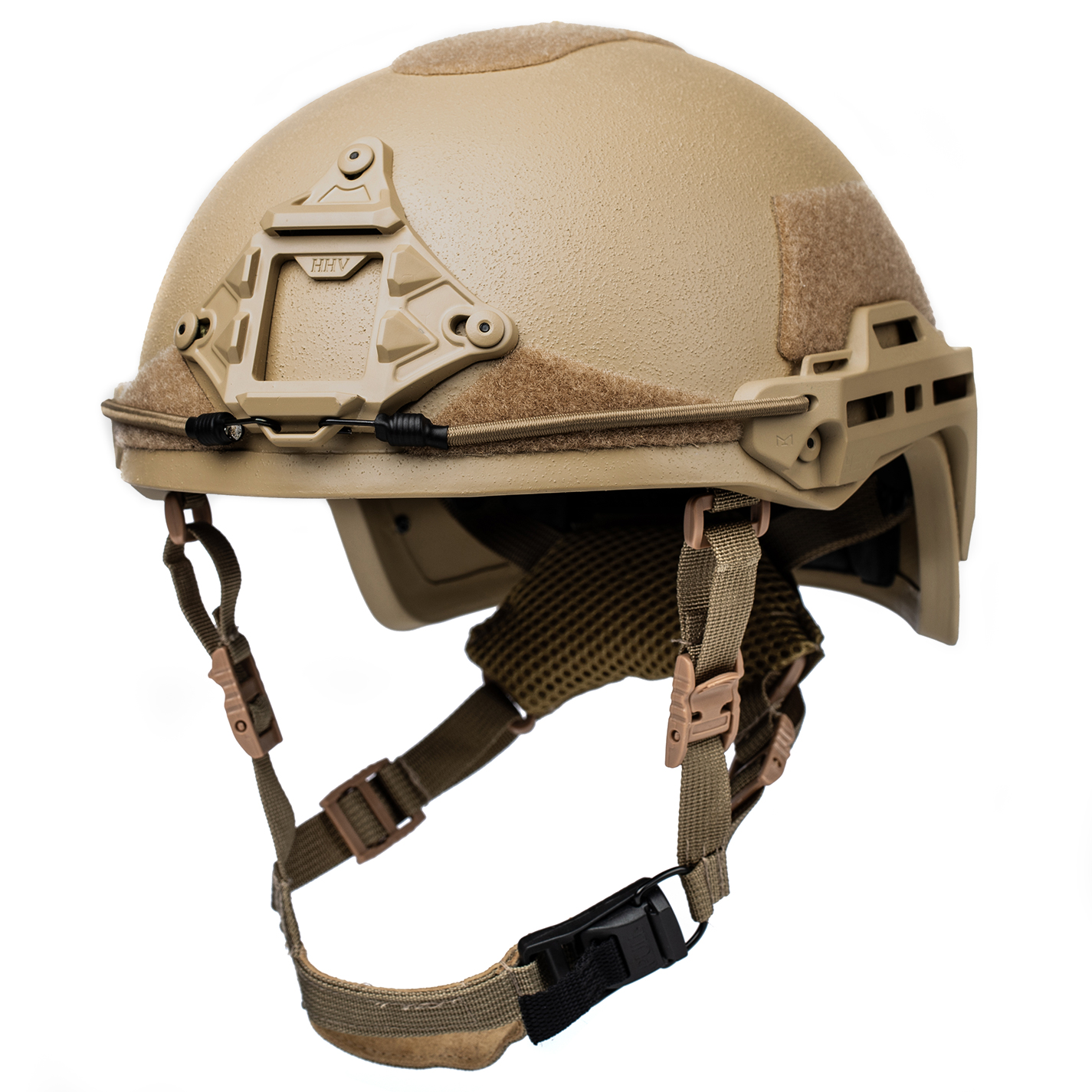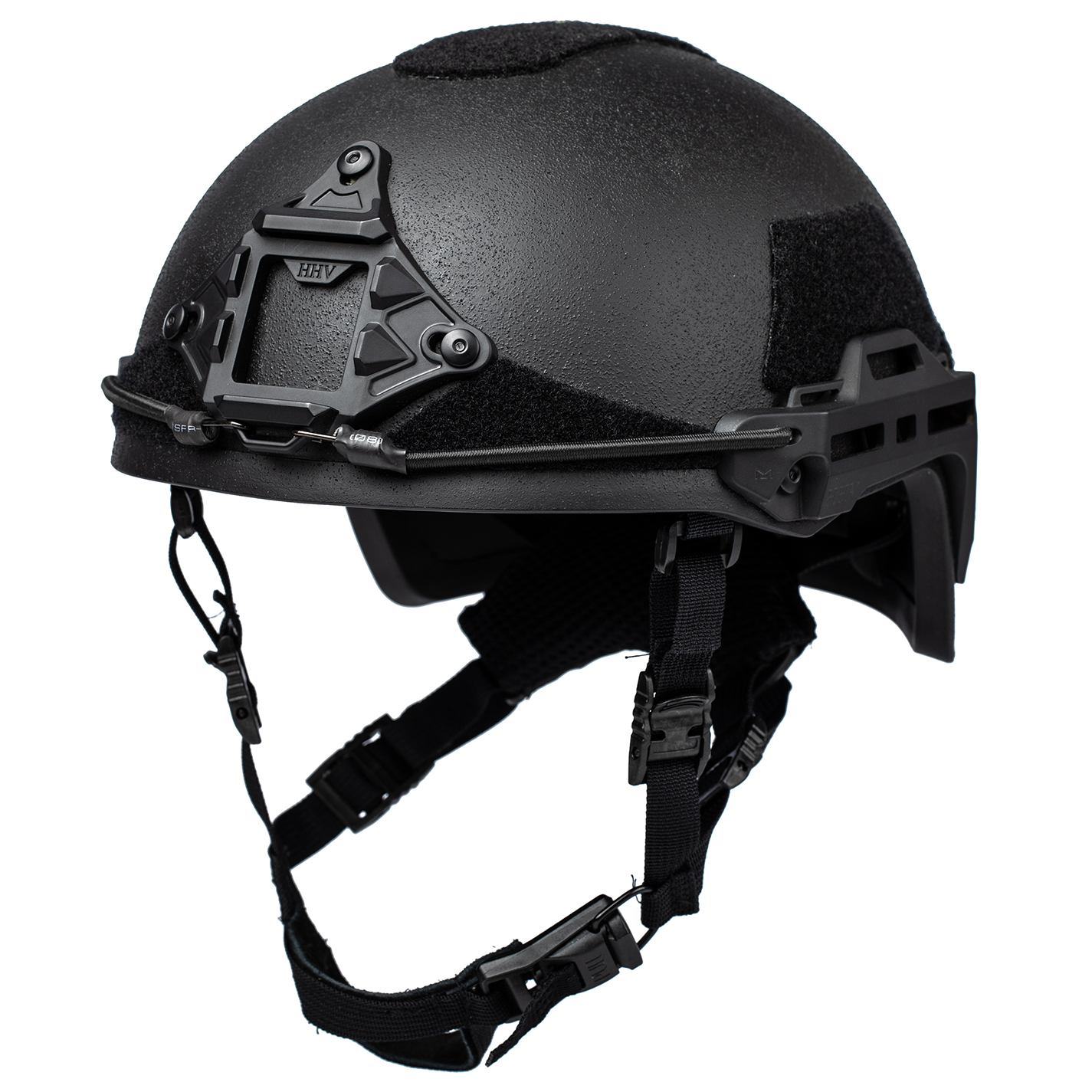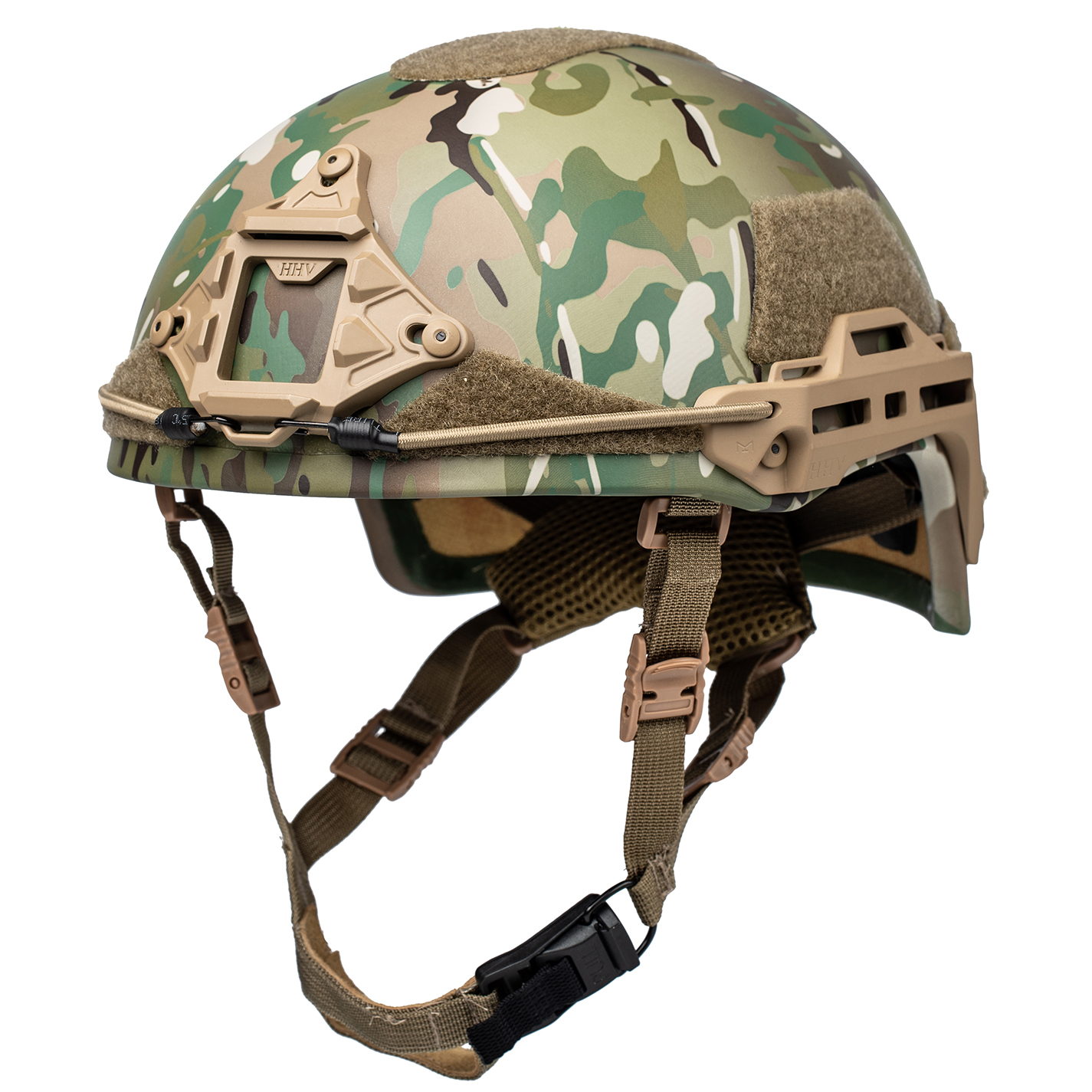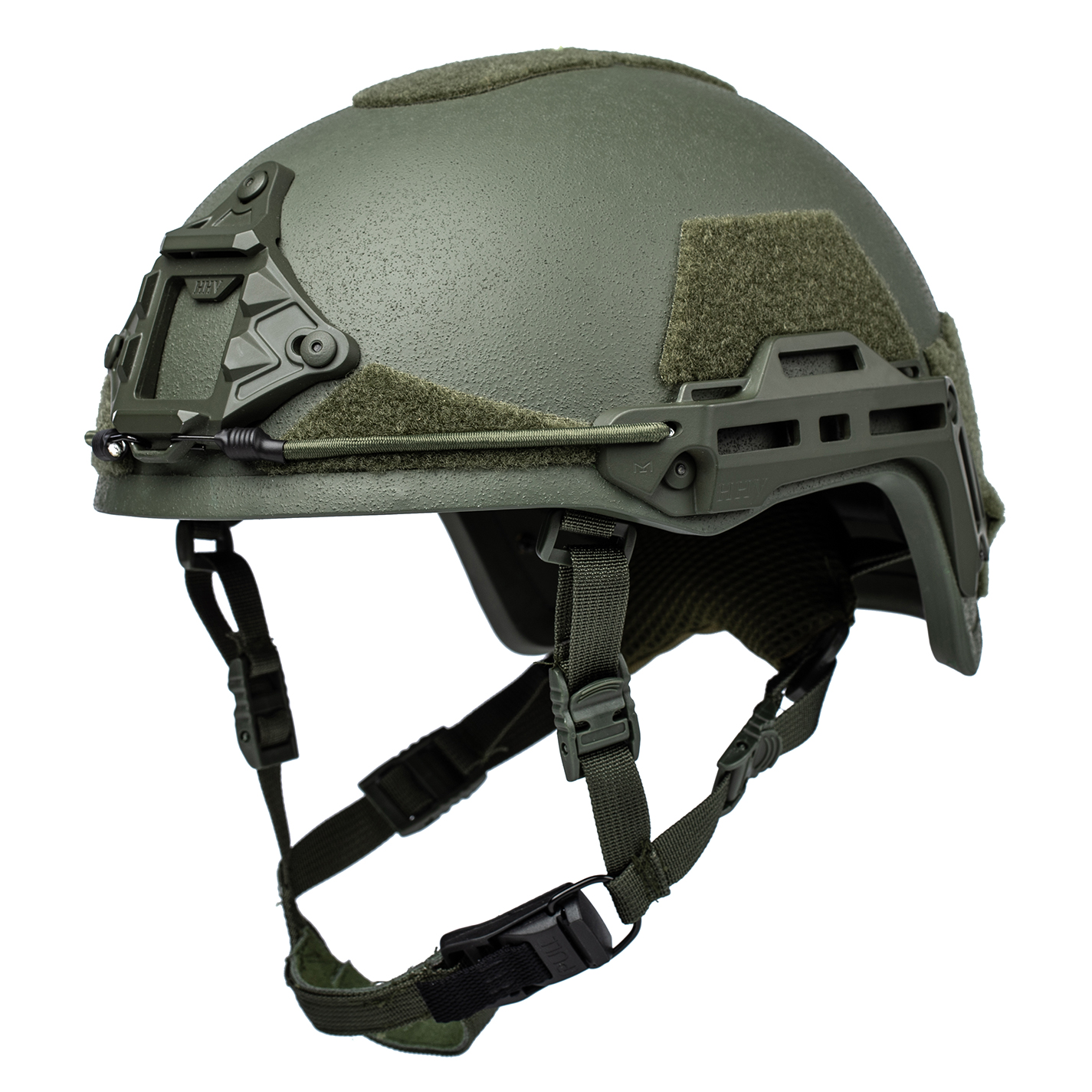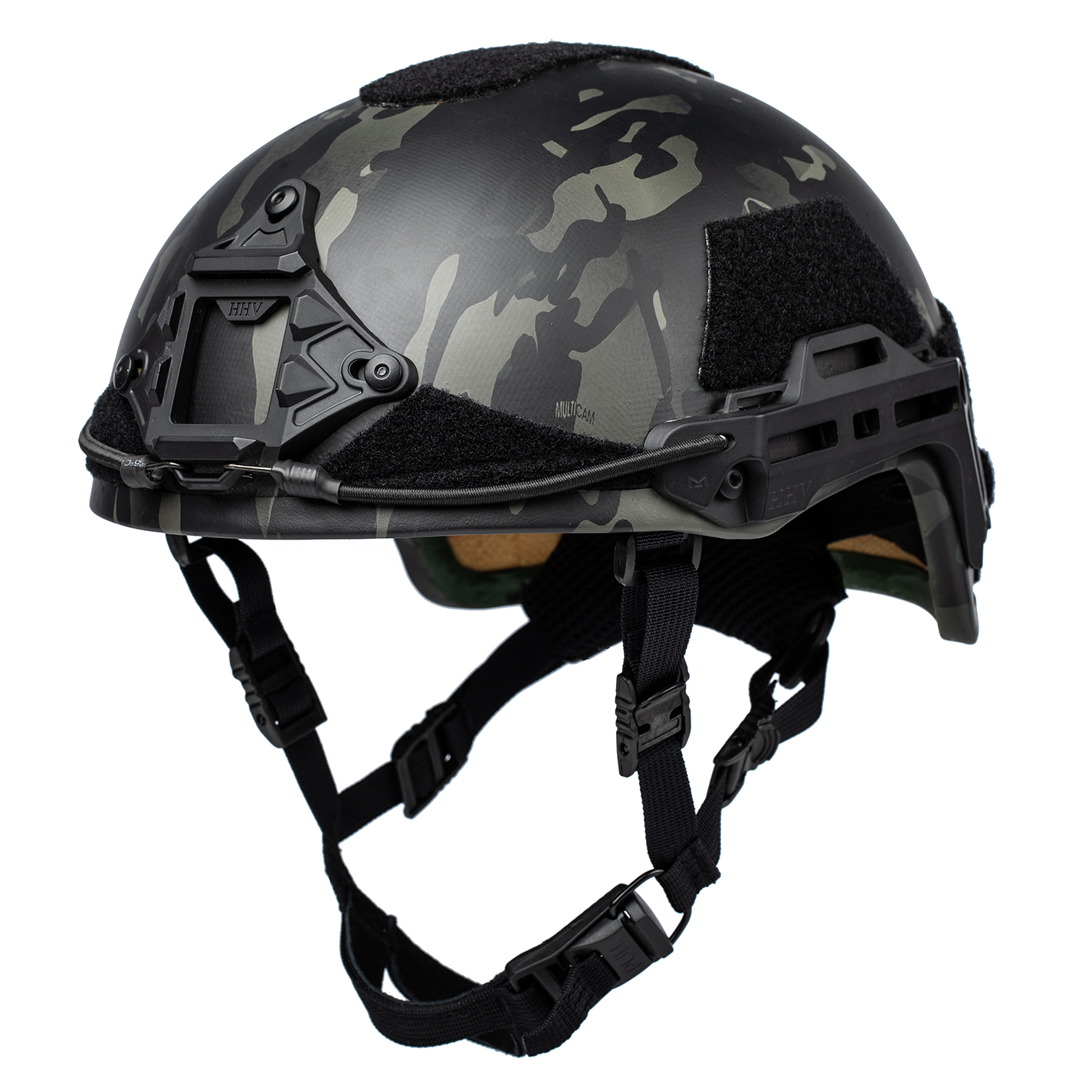Hard Headed Veterans Ballistic Helmet ATE®
Ballistic Helmet NIJ Level IIIA with Above The Ear or High Cut Design. The HHV ATE® GEN2 Ballistic Helmet, Offers The Ideal Ballistic Helmets For Law Enforcement, Military, and Private Security Contractors. The ATE® GEN 2 Ballistic Helmet shell is made from advanced para-aramid fibers. Our High Cut Helmet offers significant weight savings, with the ATE® weighing in at 3.00 lbs.
M-LOK Tactical Helmet Accessory Rails
Utilizing the MAGPUL M-LOK® SYSTEM on tactical helmet rails have allowed us to reduce the overall profile of the helmet dramatically. This reduction in helmet profile translates into less of a risk of snagging in confined spaces or on parachute risers. It also gives the user enhanced modularity with accessory options, and fewer adapters to deal with. Click the tabs below to learn how the M-LOK mounting system works with our ballistic helmet and some of the most common rail accessories used.
Lab Tested Performance
- ✓ Passed Military Spec Lab Testing
- ✓ NIJ III-A (0106.01) Ballistic Penetration Test: PASS
- ✓ V50 Ballistic Limit Test: PASS
- ✓ Environmental Tests: PASS
- ✓ Backface Deformation Test: PASS
- ✓ AR/PD 10-02 Blunt Impact Test: PASS
- ✓ Compression Test: PASS
If You Are Between Helmet Sizes, Choose The Larger Size.
Every head is different, so we include two different size pad sets for you to achieve the ideal fit.
Size Chart
![]() Ballistic Penetration Test Data
Ballistic Penetration Test Data
TESTING
What testing is the most important?
When it comes to ensuring a tactical helmet performs there are no shortcuts. There is more than a simple resistance to penetration test, and they are best performed in a laboratory. Military helmets worn by our troops must pass a strenuous string of lab tests before a contract is even awarded. We use these same tests for the baseline of our helmets, then meet and exceed them. Any tactical ballistic helmet you ever consider purchasing should at the very least have satisfactory RTP (Resistance To Penetration), BTD (commonly referred to as Backface Deformation), V50, and Blunt Impact test data for review upon request from the manufacturer. We like to go a step further and publish this information directly on our website for review!
V50 Ballistic Testing Information
Is defined as the average of an equal number of highest partial penetration velocities and the lowest complete penetration velocities which occur within a specified velocity spread. In simple terms, you are testing the ballistic limits of the tactical helmet.
Process:
- The tactical helmet is mounted to head form with 2024-T3 Alum witness plate.
- The helmet is fired upon. Typically starting with a high starting velocity, then decreasing powder charge and velocities to produce complete, partial and no penetrations.
- High partial and low complete penetrations are recorded. V50 velocity is then calculated.
BTD/BFD Testing Information
Helmet BFD is measured by the non-perforating ballistic impacts from RTP testing. It is defined as the maximum depth in the post-impact clay surface at the predetermined impact location as measured from the original clay surface.
Process:
- After mounting the helmet on the head form and mounting the head form in the test fixture, the tactical helmet is removed from the head form, and the clay surface is scanned with a laser.
- The helmet is then reattached to the head form and the shot taken.
- The tactical helmet is again removed from the headform, inspected for penetration and perforation, and the clay is rescanned with the laser to calculate BFD.
Blunt Impact Testing Information
Helmet blunt impact testing is designed to measure the protection against realistic blunt impact threats including falls, parachute drops, and motor vehicle crashes.
Process:
- Tactical helmet is positioned on a monorail drop tower.
- Helmet is dropped on different impact sites. (Crown, Front, Back, Right, Nape, Left Nape, Left Lateral, Right Lateral).
- Peak acceleration is measured (G’s)

